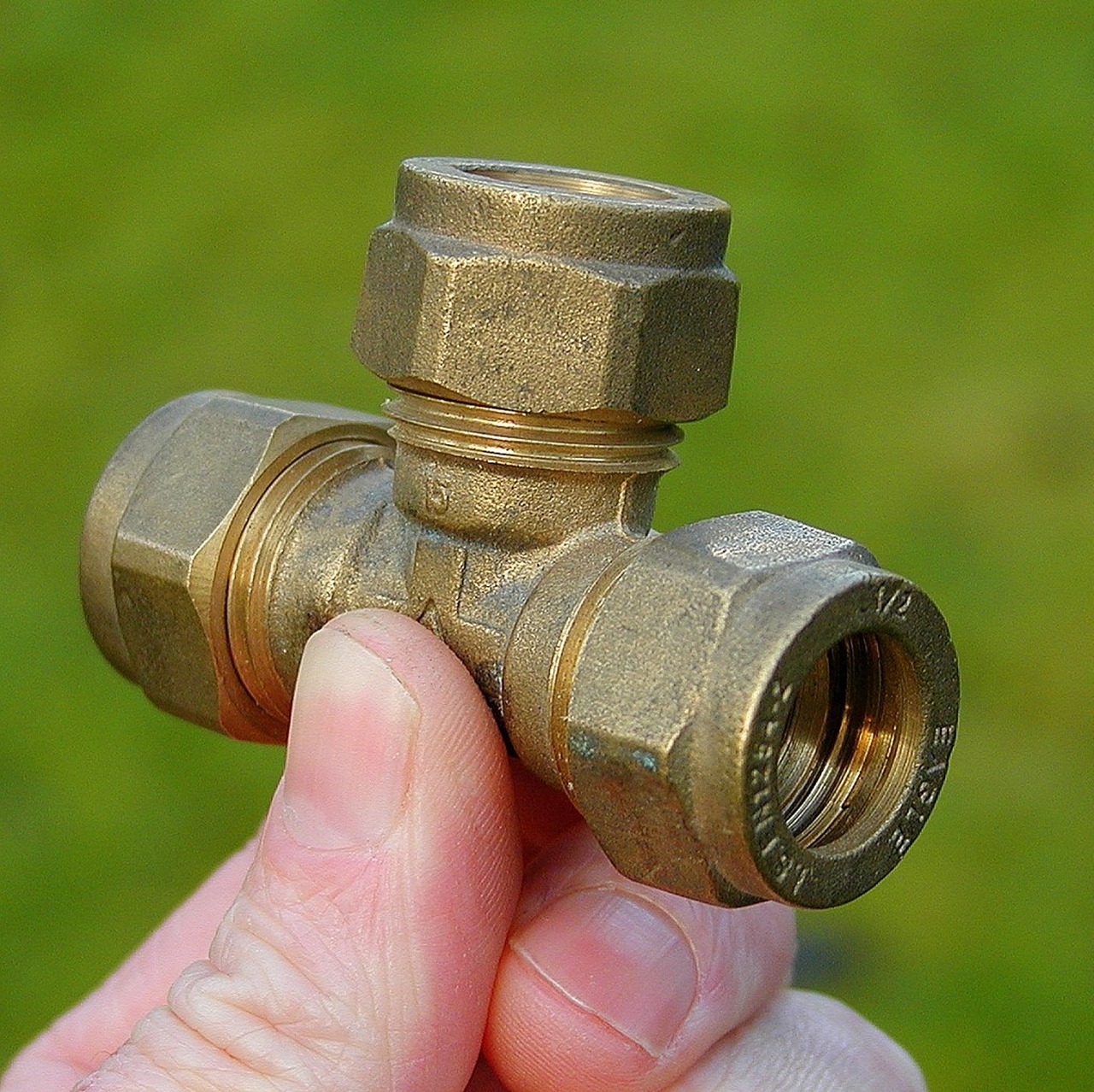Difference Between Dielectric Union and Brass
There’s a lot of work around the house that usually require tapping into water pipes; to install a bar sink, for example, or maybe to add an extra outlet for your garden hose. Piping work often entails joining one piece of metal into another. This is possible, but only with the right kind of tools or the connectors, or fittings, or unions, as they say. Knowing your tools and how to use them can exact the difference between a job done right and the one that leads to leakage. When two dissimilar metals come in contact with each other, an electrolytic reaction begins, wherein water acts as the electrolyte. As a result the metals begin to corrode. This is called galvanic corrosion.
To stop this from happening, a special adapter is used to separate the two metals by using an elastomeric rubber gasket between the dissimilar metals. This special fitting is called a dielectric union. So, when connecting copper pipe to galvanized iron pipe, a dielectric union is installed to hold the two dissimilar metal pipes together. However, there’s yet another alternative to a dielectric union – a brass nipple or a brass fitting which also qualifies as a copper alloy fitting and complies with building code standards too. So should you use a dielectric union or a brass fitting to connect two dissimilar metal pipes? Let’s see how they differ in their properties and functionality.
What is Dielectric Union?
A dielectric union is a special adapter or fitting used in the piping systems of different metals to isolate the connection of the dissimilar metals. For example, when connecting a copper pipe to a galvanized iron pipe, a dielectric union is installed between the two to hold the two dissimilar metal pipes together. An elastomeric rubber gasket seals the connection to prevent any water leak and a plastic composite material isolates the copper tube connection to the tightening nut on the dielectric union. Dissimilar metals begin to corrode when they come in contact with each other. The small quantity of acid on water triggers the electrolytic reaction between the two metals causing electrons from one metal to flow to the other. This ultimately results in galvanic corrosion. To stop this from happening, a dielectric union is used to join the two dissimilar metal pipes.
What is Brass Fitting?
Brass fittings and nipples are also commonly used as a great alternative to dielectric unions for water distribution systems. When galvanized water is exposed to certain water qualities, rust is produced and to prevent that from corroding, brass fittings can be used. Both unions and brass are approved for use throughout water distribution and piping systems, but brass is used where poor water quality is present and galvanized materials have high chances of getting corroded. Brass is a malleable alloy of copper and zinc that has been in use for centuries. Brass fittings are manufactured to IPS and NPT standards and are very well compatible with threaded adapters made from other materials.
Difference between Dielectric Union and Brass
Basics
A dielectric union is a special adapter or fitting used in the piping systems of different metals to isolate the connection of the dissimilar metals. An elastomeric rubber gasket seals the connection between the two metals, preventing any water leakage of sort. Brass, on the other hand, is a malleable alloy of copper and zinc that has been in use for centuries. Brass fittings are also commonly used as an alternative to dielectric unions for water distribution systems. Besides, both dielectric unions and brass are approved for use throughout water distribution and piping systems
Use
When two dissimilar metals come in contact with each other, an electrolytic reaction begins, wherein water acts as the electrolyte. As a result the metals begin to corrode. This is called galvanic corrosion. To prevent this from happening, dielectric unions are used to connect the dissimilar metal pipes. Brass is widely used for fittings for copper pipe and is mainly used where poor water quality is present and galvanized materials have high chances of getting corroded. Although, resistant to rust, brass is vulnerable to acidic water.
Applications
Dielectric unions are commonly used around commercial and residential water distribution systems to avoid electrolysis and deterioration in the piping systems. Moreover, a plastic composite material behind the union’s clamping collar breaks any electrical continuity between the two systems, limiting galvanic corrosion. Threaded brass is widely used for fittings for copper pipe and brass connectors of any kinds are used in the repair industry. They are also used with copper, PEX, and PE and are compatible with each pipe or tubing. Although, a bit expensive, brass does provide a high-quality installation.
Dielectric Union vs. Brass: Comparison Chart
Summary of Dielectric Union vs. Brass
While both dielectric unions and brass fittings are approved for use throughout water distribution and piping systems, brass is mainly used where water quality is poor and galvanized metal pipes have high chances of corrosion. Brass nipples put the metals farther away and unlike dielectric unions, they do not have any elastomeric rubber gasket to fail in the future. That being said, dielectric unions are always the preferred choice of fittings in the water distribution systems, especially when it comes to connecting two dissimilar metals only to avoid electrolysis and deterioration in the piping systems.
- Difference Between Caucus and Primary - June 18, 2024
- Difference Between PPO and POS - May 30, 2024
- Difference Between RFID and NFC - May 28, 2024
Search DifferenceBetween.net :
Leave a Response
References :
[0]Hemp, Peter. Plumbing a House. Newtown, Connecticut: Taunton Press, 1998. Print
[1]Joyce, Micheal. Residential Construction Academy: Plumbing. Boston, Massachusetts: Cengage, 2004. Print
[2]Germer, Jerry. Kitchen & Bath Residential Construction and Systems. Hoboken, New Jersey: John Wiley & Sons, 2013. Print
[3]Image credit: https://pixabay.com/de/photos/sanit%C3%A4r-armaturen-rohr-verbindung-1002128/
[4]Image credit: https://en.wikipedia.org/wiki/Thread_seal_tape#/media/File:PTFE_Tape.png



